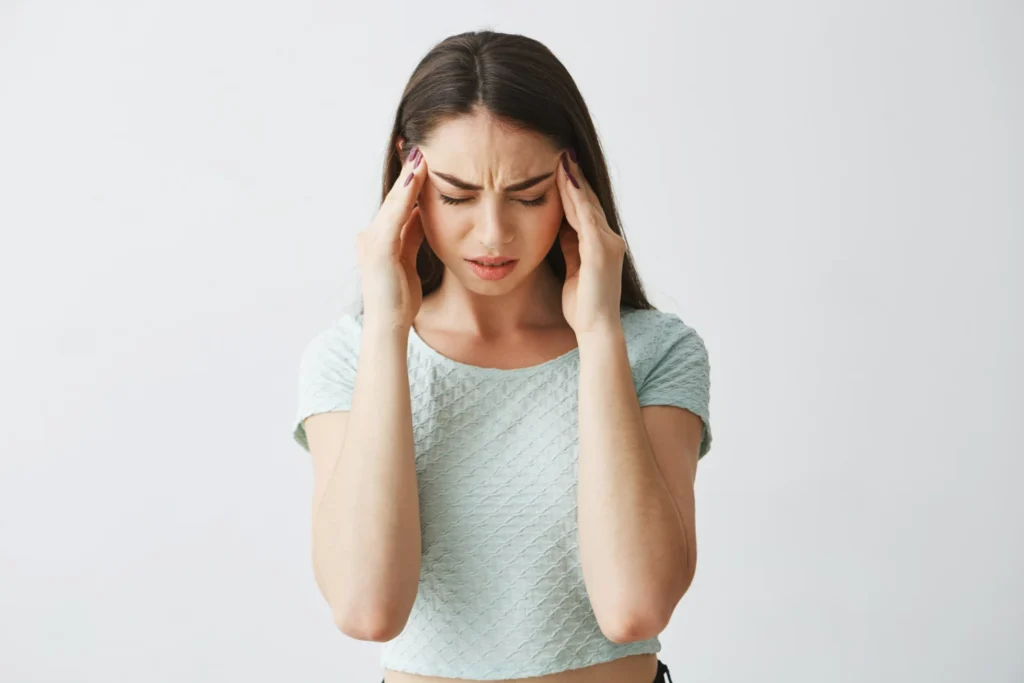Do you have a throbbing headache on one side of your head? Does sensitivity to light accompany it? If yes, you may be experiencing a migraine attack. Here are the best Natural Remedies For Migraine in 2025.
Migraine is a chronic neurological condition that can severely impact daily life. It’s more than just a headache — it brings pulsing pain often followed by nausea, vomiting, and heightened thirst. Some people even sense a migraine coming up to two days before the pain begins, noticing visual disturbances, trouble speaking, or unusual sounds. After an episode, it’s common to feel drained and confused.
What Is Migraine?
Migraine is a neurological disorder often presenting as a throbbing headache on one side of the head. It can be hereditary and is three times more common in women than men. Other symptoms include:
- Nausea and vomiting
- Visual disturbances or aura
- Sensitivity to light, sound, or smell
- Fatigue post-episode
Common Migraine Triggers
Identifying and avoiding triggers is key to managing migraines. These may include:
Hormonal: Menstruation, menopause changes
Emotional: Stress, anxiety, depression
Physical: Fatigue, irregular sleep, low blood sugar
Environmental: Bright lights, noise, strong smells
Dietary: Alcohol, caffeine, skipped meals, dehydration
Learning your unique triggers through observation or a diary can make a significant difference.
Why Consider Homeopathy?
Homeopathic remedies are derived from natural substances, offering gentle yet effective treatment for migraines. Common homeopathic medicines used include:
- Sanguinaria
- Belladonna
- Ignatia
- Natrum Mur
- Iris Versicolor
Homeopathy aims to reduce both the frequency and intensity of migraines with minimal side effects. While some may experience improvements within weeks, others may require longer treatment, depending on their individual health history.
Best homeopathy mother tinctures for migraine
- Chionanthus Q
- Scutellaria Laterifolia
- Damiana
These mother tinctures are taken as drops along with potentized medicines for the desired results.
Best Natural Remedies for Migraine
If you are looking for safe and gentle ways to find relief, a natural remedy for migraine could be your best approach. Home remedies for migraines are generally free of side effects and can be surprisingly effective in managing symptoms or reducing migraine frequency.
Here is a top 10 comprehensive guide to the best natural remedies for migraine that may help prevent and relieve migraine attacks.
1. Stay Hydrated
One of the simplest and most effective natural remedies for migraine is proper hydration. Dehydration is a known trigger and can intensify headache severity.
Make it a habit to drink water consistently throughout the day. Consider adding electrolytes — preferably sugar-free and with added vitamin C — for a quicker boost. Maintaining hydration not only supports overall health but also minimizes your risk of developing migraines.
2. Make Dietary Adjustments
Your diet plays a crucial role in migraine prevention. Certain foods and beverages are common culprits, including:
- Processed foods
- Alcohol (especially red wine)
- Chocolate
- Caffeinated drinks
Keeping a migraine journal or food diary can help you track and identify your personal triggers. Avoiding these foods may significantly reduce the frequency of migraine episodes.
3. Use Lavender Oil
Lavender oil has calming effects and is known to help reduce migraine symptoms. Inhaling lavender for 15 minutes during a migraine attack has shown significant improvement in some individuals.
It also promotes better sleep and reduces stress — both important factors in migraine management.
4. Try Ginger
Ginger is a powerful natural anti-inflammatory. It can reduce nausea, vomiting, and pain — all common symptoms of migraines.
Apply fresh ginger paste to your forehead or between your eyebrows, or sip hot ginger tea for relief. Ginger is safe, easily available, and one of the most trusted natural remedies for migraine.
5. Acupuncture
This traditional Chinese therapy involves inserting thin needles into specific points in the body. Acupuncture helps restore energy flow and may be especially effective in treating chronic migraine pain.
It is generally considered safe and well-tolerated when performed by a licensed practitioner.
6. Practice Yoga or Stretching
Yoga combines breathing techniques, meditation, and posture control. Studies suggest yoga may reduce the intensity, duration, and frequency of migraines. It also improves vascular health and lowers anxiety levels, both key components in migraine management.
7. Get a Massage
A gentle massage focusing on the neck and shoulder muscles can ease tension and migraine pain. Massage also promotes relaxation and stress relief — two critical factors in preventing migraines.
You can either see a professional or try self-massage using a tennis ball on your shoulders and upper back.
8. Explore Biofeedback Therapy
Biofeedback teaches you to control physiological functions like muscle tension using real-time feedback. It’s a safe, effective method for stress-related migraines.
This technique requires training but can provide long-term relief by helping you identify and manage stress triggers.
9. Consider Butterbur
Butterbur extract has shown potential in clinical studies for reducing migraine frequency and intensity. The compounds petasin and isopetasin found in Butterbur help decrease inflammation and muscle spasms.
However, pregnant or breastfeeding women should avoid it. Always consult a healthcare provider before starting.
10. Use Hot or Cold Compresses
Many people with migraines find relief with a cold compress applied to the forehead or back of the neck. Others may benefit from a warm compress. Try both to see which one works best for you.
People with certain medical conditions, such as diabetes or skin sensitivity, should avoid extreme temperatures.
Conclusion
Migraines affect millions of people and can significantly disrupt daily life. Fortunately, many natural remedies for migraine — from hydration and dietary changes to lavender oil, yoga, and homeopathy — can offer relief without side effects. An increasing number of people suffer from migraines. It harms the quality of life. There is a lack of concentration among people in their daily activities. With homeopathy medicines and by avoiding triggering factors, this suffering can be easily cured. The allopathic system treats migraine with painkillers, but the headache will return once the painkillers have worn off. By avoiding harmful painkillers, homeopathic medicine promotes a healthy life. Contact Dr Basil Homeo Hospital For Effective Migraine treatment.
Phone: 9424842486

